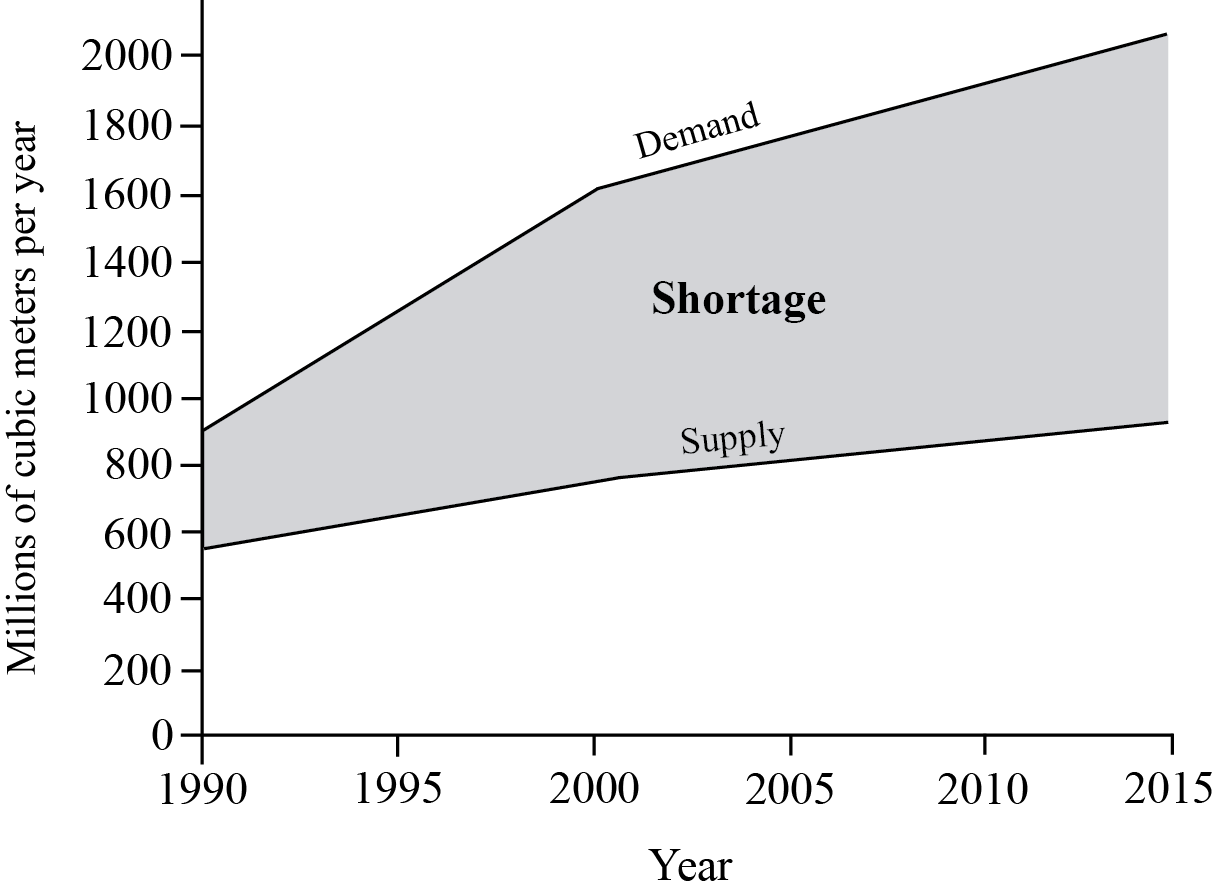| Date | Marks available | 2 | Reference code | .2.bp.2 | |
| Level | SL and HL | Paper | 2 | Time zone | |
| Command term | Describe | Question number | 2 | Adapted from | N/A |
Question
The graph shows the supply and demand for water in an unnamed country from 1990 to 2015.

[Source: adapted from an edited version of Water Pollution Control – A Guide to the Use of Water Quality Management Principles (1997), WHO/UNEP]
Describe the trend in water shortage between 1990 and 2015 shown on the graph.
Suggest possible reasons for the changes in supply between 1990 and 2015 shown on the graph.
Analyse two competing demands for water in a named river basin.
Referring to one or more examples, examine the environmental effects of ground water abstraction and irrigation.
Markscheme
Water shortage is increasing [1 mark], but at a decreased rate since 2000 [1 mark]. For full marks some quantification is required.
Possible reasons include the increased abstraction of ground water as a result of new wells, increased water from storages such as reservoirs, and from desalination plants. The suggestion that the increased supply comes from increased precipitation is not acceptable, since it would not result in such a uniform trend over the time period. Award 1 mark each for two valid reasons.
Competition for water is intense in many river basins. It is expected that candidates will analyse two broad categories of demand (such as residential, industrial, agricultural) and not two highly specific demands; the latter approach is likely to prove self-penalizing in the context of this question. Award 1 mark for the clear identification of two competing demands and 1 mark for the identification of a specific river basin.
The remaining 4 marks should be reserved for the analysis of the competing demands. It is not necessary for the analysis of the two demands to be equal, but the response must make some points of comparison or contrast in order to be awarded 4 marks.
There are numerous environmental effects associated with ground water abstraction and irrigation. Ground water abstraction may lead to falling water tables, salt-water incursions if close to the coast, and, in extreme cases, subsidence of the ground surface. The effects of irrigation may include salinization, agro-chemical runoff, ground water pollution and the increased likelihood of the eutrophication of lakes, rivers and wetlands. Other valid ideas should also be credited.
Candidates are expected to examine a variety of effects and both positive and negative effects are equally acceptable.
It is not necessary for ground water abstraction and irrigation to be treated equally. Answers considering both aspects of the question in some detail are likely to be credited at bands E/F. Answers that use an appropriate example or examples are likely to be credited at band D and above.
Marks should be allocated according to the markbands.

